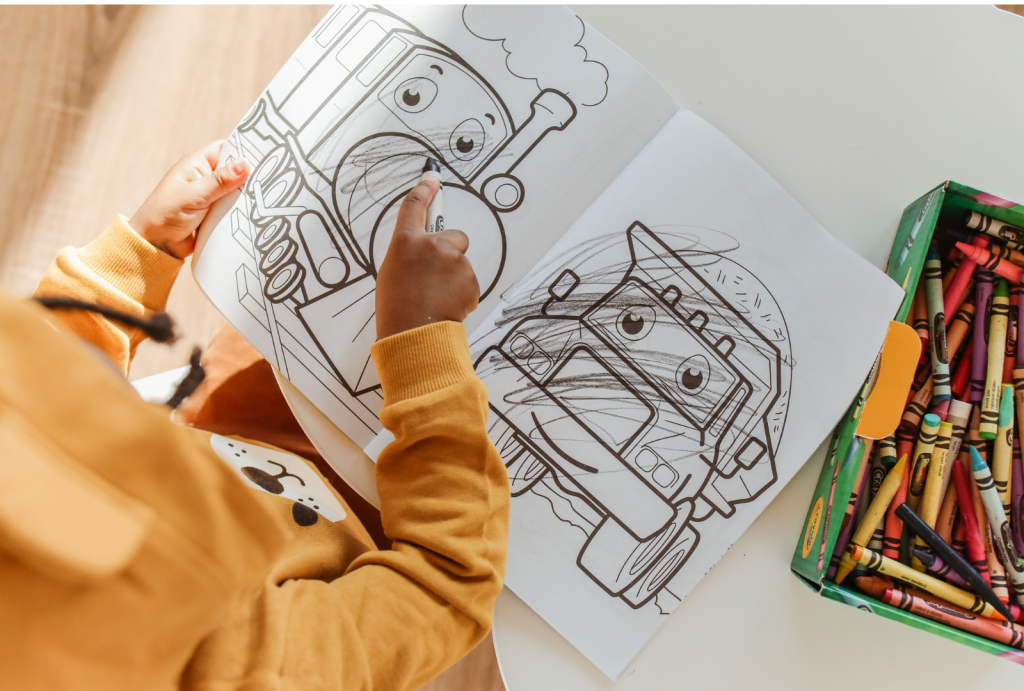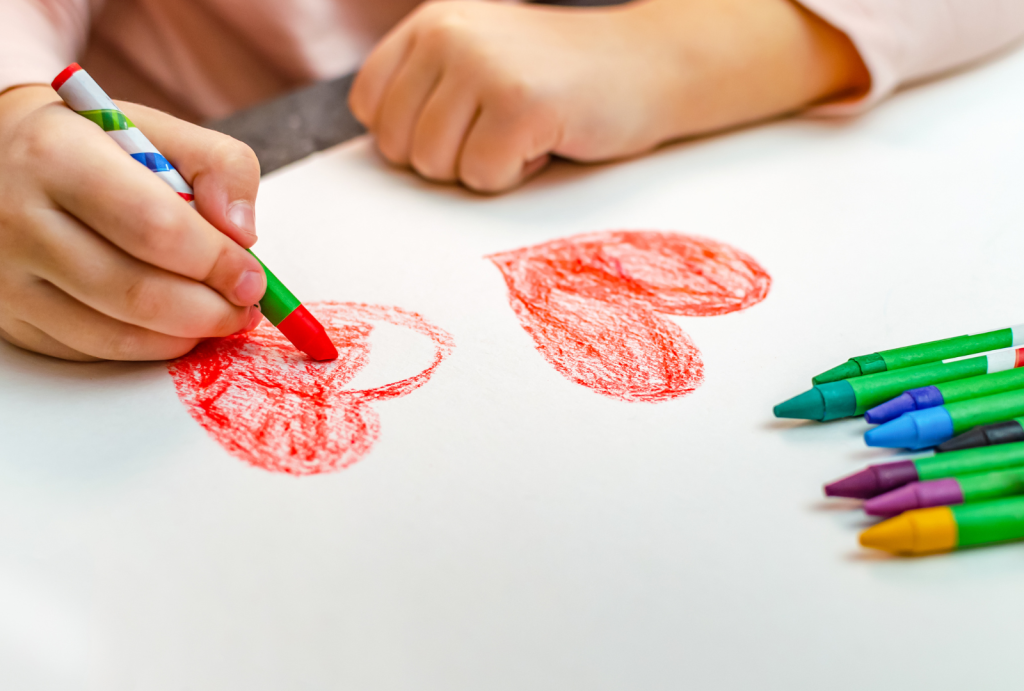Coloring is a common and enjoyable activity for young children, but one thing many parents notice is that younger kids often don’t color within the lines in coloring books. While it might seem like a simple task to adults, staying within the lines is actually quite challenging for toddlers and preschoolers. Why don’t younger kids color within the lines in coloring books? The answer lies in their developmental stages, motor skills, and cognitive growth.
Understanding Early Childhood Development and Coloring

Young children, especially those between the ages of one and four, are still developing the essential skills needed to control their hand movements. Coloring inside the lines requires a combination of fine motor skills, hand-eye coordination, and cognitive understanding of boundaries—all of which are still in the early stages of development in younger children.
Fine Motor Skills Development
Fine motor skills involve the use of the small muscles in a child’s hands, fingers, and wrists. At a young age, these muscles are still developing, making it difficult for children to control their crayon or pencil with precision. As a result, children often color outside the lines or scribble across the entire page.
- Exploratory Scribbling (Ages 1-2): At this stage, children are just beginning to experiment with crayons. Their scribbles are often uncontrolled, but these marks are an important step in learning how to hold and move the crayon.
- Controlled Scribbling (Ages 3-4): By the time children are three or four years old, they have better control over their hand movements, but they still lack the fine motor skills needed to stay inside the lines consistently.
Hand-Eye Coordination
Another important factor that explains why younger kids don’t color within the lines in coloring books is their developing hand-eye coordination. Hand-eye coordination is the ability to guide the movements of the hand based on what the eyes are seeing. While young children are building this skill, it takes time and practice to master it.
- Visual Perception: Younger children are still learning to process visual information and translate that into precise hand movements. The concept of boundaries is still new, and their eyes and hands are not yet working in perfect harmony.
Cognitive Understanding of Boundaries
Coloring inside the lines requires not only physical control but also cognitive understanding. Younger children may not fully grasp the concept of staying inside the lines until they are closer to five or six years old. For toddlers, coloring is about exploration, and they are more focused on enjoying the experience than following specific rules.
- Creativity vs. Structure: At a young age, children are more likely to explore creativity without thinking about boundaries. They may intentionally or unintentionally color outside the lines because they are more interested in expressing their imagination than adhering to the structure.
When Do Kids Start Coloring Inside the Lines?
While younger kids generally don’t color within the lines until they are older, the ability to do so typically starts developing between the ages of five and six. This is when children gain better control over their hand movements and begin to understand the concept of boundaries. However, it’s important to remember that each child develops at their own pace.
- Fine Motor Control (Ages 5-6): At this age, children have stronger fine motor skills, allowing them to control their crayons or pencils with more precision.
- Improved Focus: Older children can also focus for longer periods, helping them concentrate on staying within the lines while they color.
Why Is It Important to Let Younger Kids Explore Coloring Freely?
Even though younger kids don’t color within the lines in coloring books, it’s important to let them explore coloring without pressure. Encouraging free-form coloring allows children to develop their creativity, fine motor skills, and confidence at their own pace.
- Building Fine Motor Skills: By letting children color freely, they are naturally strengthening the muscles in their hands and improving their hand-eye coordination.
- Encouraging Creativity: Free coloring encourages children to think creatively and express themselves without the restriction of staying inside the lines.
How to Encourage Children to Color Inside the Lines

While younger children may not be ready to consistently color within the lines, parents and educators can encourage them to develop the skills needed over time. Here are some tips to help children improve their coloring abilities:
1. Provide Large, Simple Coloring Pages
Start with coloring books that have large, simple images. The bigger the shapes, the easier it will be for children to practice coloring inside the lines without becoming frustrated.
2. Use Age-Appropriate Tools
Provide young children with thicker crayons or markers that are easier for small hands to grip. This will give them better control as they practice their coloring skills.
3. Encourage Practice Without Pressure
Offer gentle encouragement and praise for effort rather than perfection. The goal is to help children enjoy the process of coloring and improve their skills naturally, not to pressure them into coloring perfectly within the lines.
Conclusion
Why don’t younger kids color within the lines in coloring books? The answer lies in their developing fine motor skills, hand-eye coordination, and cognitive understanding of boundaries. As children grow and practice, they will gradually develop the ability to stay within the lines while coloring. It’s important to allow younger kids the freedom to explore and enjoy coloring, as this will support their overall development and creativity.
FAQs
Why don’t younger kids color within the lines?
Young children are still developing the fine motor skills, hand-eye coordination, and cognitive understanding needed to stay within the lines while coloring.
When do kids start coloring inside the lines?
Most children begin coloring inside the lines between the ages of five and six as their fine motor skills and focus improve.
Why is coloring important for children?
Coloring helps children develop essential skills such as hand-eye coordination, fine motor control, and creativity.
How can I encourage my child to color inside the lines?
Provide large, simple coloring pages, use age-appropriate tools, and encourage practice without pressuring them to be perfect.
